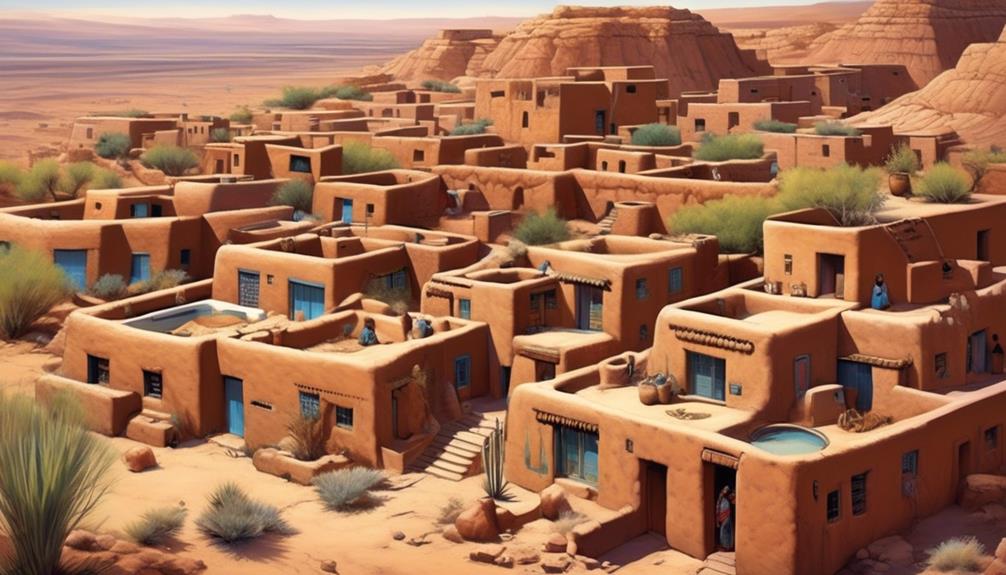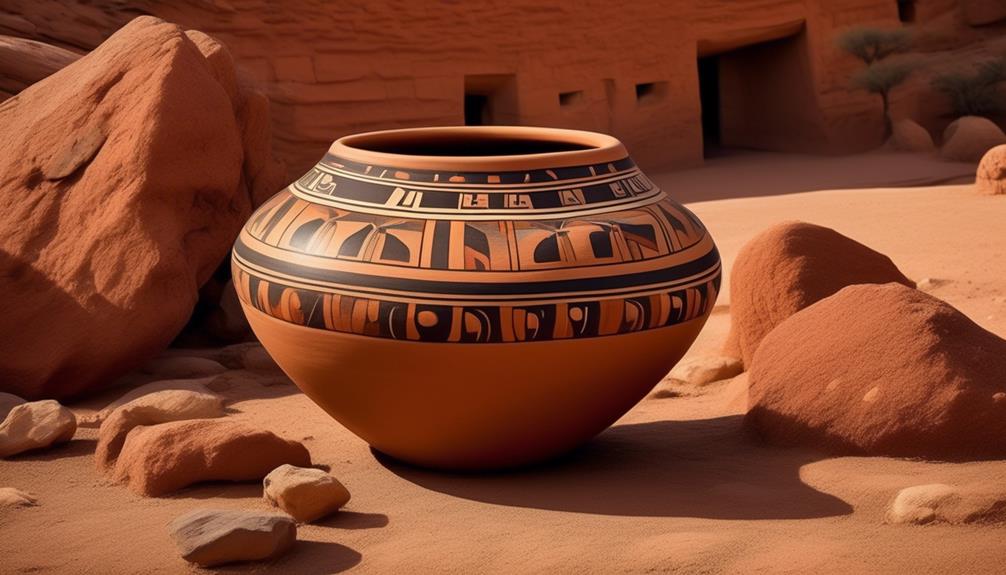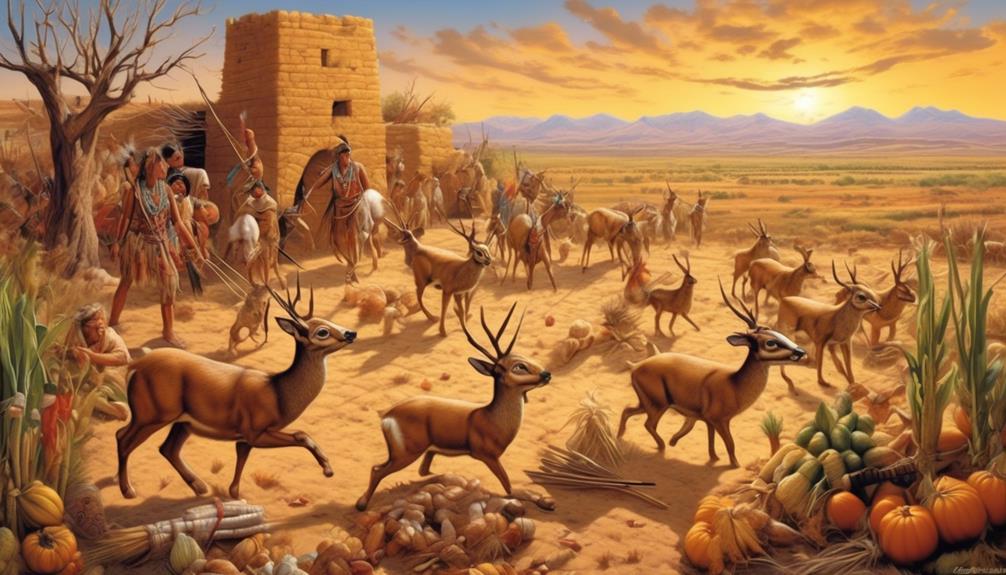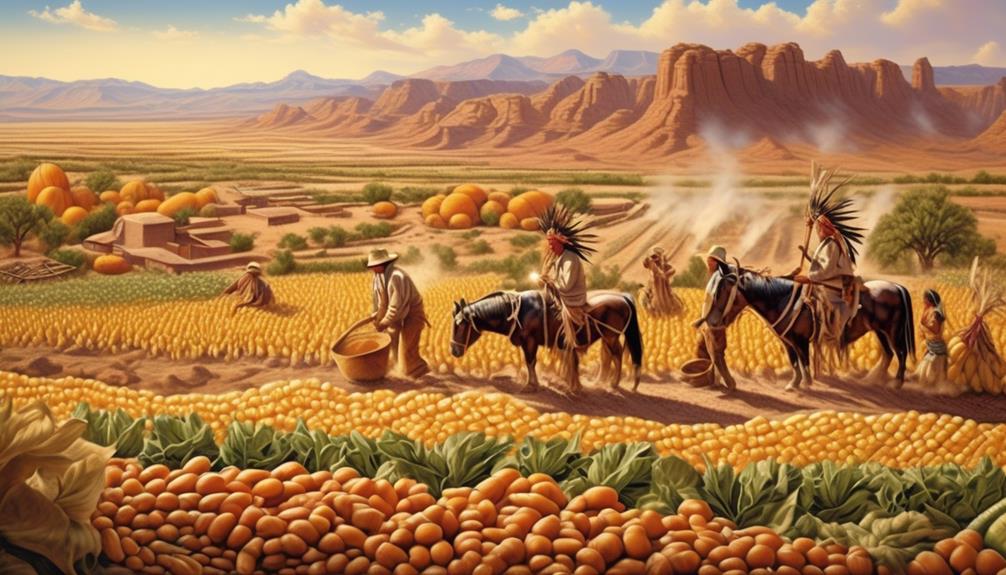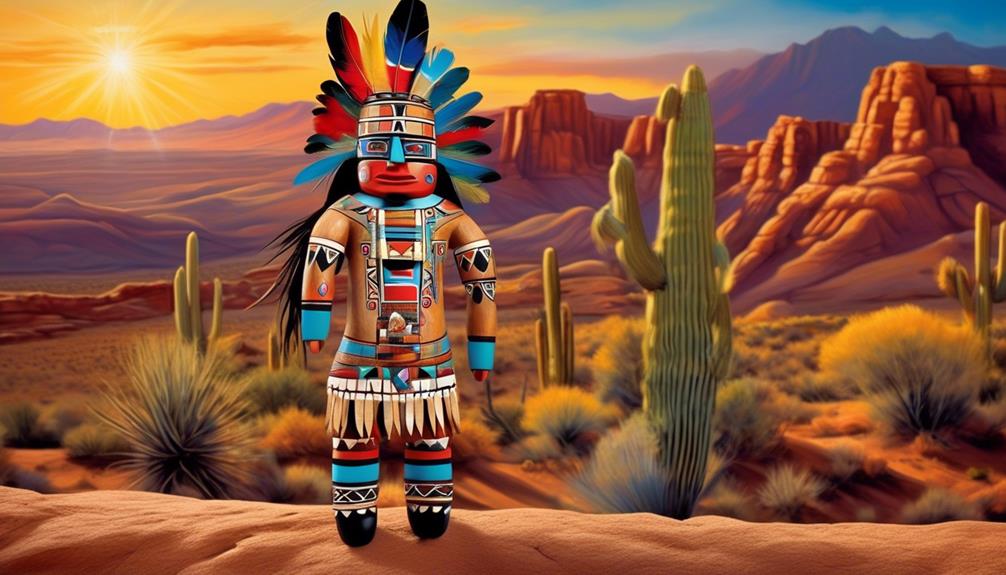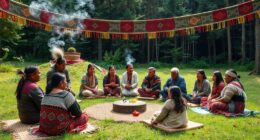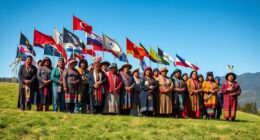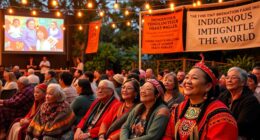When considering the wide range of Native American cultures, it is impossible not to be intrigued by the Hopi Tribe, known for their deep connection to the land and their strong traditions.
The question of where the Hopi Tribe is living now is not as straightforward as one might assume. The complexities of their historical and contemporary settlement patterns, coupled with the challenges they face, shed light on the resilience and adaptability of this ancient people.
It is a story that unfolds across time and space, offering insights into the delicate balance between tradition and modernity.
Key Takeaways
- The Hopi Tribe is currently living on the Hopi Reservation in northeastern Arizona.
- The Hopi Reservation encompasses diverse landscapes, including high desert mesas and low-lying valleys.
- The preservation of their cultural and religious practices is closely tied to specific locations within their traditional homelands.
- Efforts to preserve the Hopi Tribe's cultural heritage include documenting oral histories, revitalizing traditional crafts and arts, and incorporating traditional knowledge into modern educational curricula.
Hopi Tribe's Traditional Homelands
Located in northeastern Arizona, the traditional homelands of the Hopi Tribe encompass a diverse landscape ranging from high desert mesas to low-lying valleys. The Hopi Tribe has upheld traditional practices that are deeply rooted in their connection to the land. Their cultural and religious ceremonies are tied to specific locations within their traditional homelands, highlighting the significance of land rights in preserving their way of life. Despite the challenges posed by modern adaptation and external influences, the Hopi Tribe has shown remarkable resilience in maintaining their community ties to the land.
The traditional practices of the Hopi Tribe are intricately linked to their understanding of the land as a source of sustenance and spiritual nourishment. These practices have allowed the tribe to sustain their community for generations, fostering a deep sense of resilience. However, the modern adaptation has presented challenges to the tribe's land rights, as external interests encroach upon their traditional homelands. Despite this, the Hopi Tribe continues to assert their rights and uphold their traditional practices, showcasing their unwavering dedication to preserving their cultural heritage and community resilience.
Hopi Reservation in Arizona
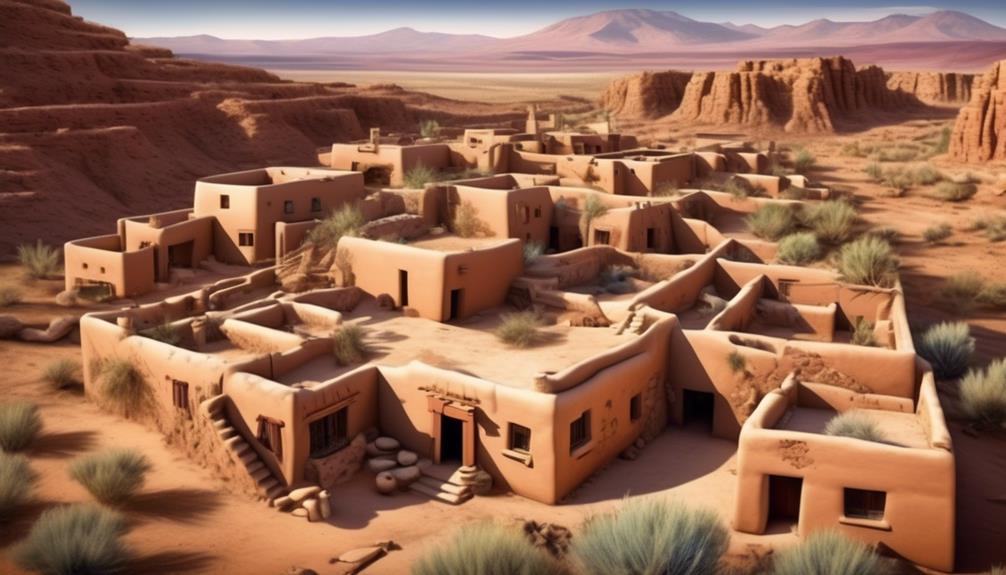
The Hopi Tribe's reservation in Arizona encompasses a significant portion of their traditional homelands and plays a crucial role in preserving their cultural heritage and sovereignty. The reservation covers approximately 2,531 square miles in northeastern Arizona, providing a home for the Hopi people and serving as a center for the preservation of their rich traditions and customs. The table below illustrates the key aspects of the Hopi reservation and its significance in upholding tribal sovereignty.
| Aspect | Description |
|---|---|
| Land | The reservation land is arid and rugged, with mesas, canyons, and a unique desert landscape. |
| Cultural Sites | It encompasses numerous ancient villages, ceremonial sites, and petroglyphs of cultural importance. |
| Tribal Governance | The reservation is governed by the Hopi Tribal Council, which oversees the management and development of the land. |
The Hopi reservation not only provides a physical space for the tribe to reside but also serves as a vital link to their ancestral past and spiritual identity. Through the preservation of their lands and cultural sites, the Hopi people continue to assert their tribal sovereignty and maintain their distinct way of life.
Challenges of Relocation
In examining the Hopi Tribe's reservation in Arizona and its pivotal role in preserving their cultural heritage and sovereignty, it becomes evident that the challenges of relocation pose significant obstacles to maintaining their ancestral connection and traditional way of life.
Cultural identity is deeply intertwined with the land, and relocation disrupts the spiritual and historical significance attached to specific geographic locations. Government policies often dictate the terms of relocation, leading to a disconnect between the Hopi Tribe and their traditional practices.
The challenges of relocation also encompass economic hardships, as the transition to a new environment may limit access to resources essential for preserving cultural traditions. Additionally, the loss of familiar landscapes and natural surroundings can impact the spiritual well-being of the community, further complicating the preservation of cultural identity.
The upheaval of relocation can strain social structures, as cohesive community dynamics may be disrupted when individuals are relocated to unfamiliar territories. Moreover, the process of relocation may lead to the dilution of traditional knowledge and practices, undermining the continuity of cultural heritage.
Efforts to Preserve Cultural Heritage
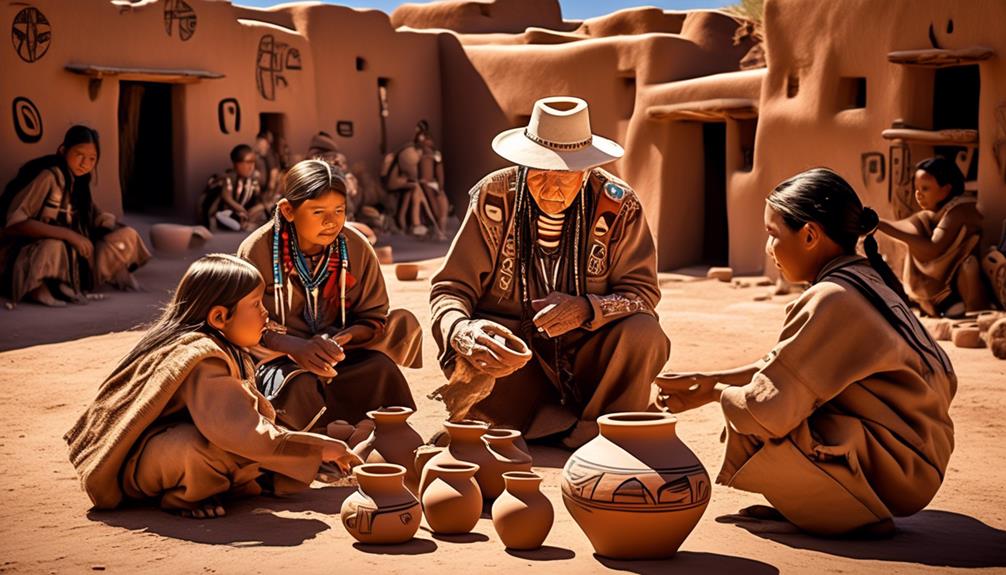
Preserving the Hopi Tribe's cultural heritage requires a comprehensive and coordinated effort to safeguard traditional practices and values amidst the challenges of relocation. Cultural preservation and heritage conservation are vital to maintaining the rich tapestry of Hopi traditions. Efforts to preserve our cultural heritage include initiatives such as the documentation of oral histories, the revitalization of traditional crafts and arts, and the continuation of ceremonial practices. These efforts are crucial for passing down our cultural legacy to future generations.
Moreover, collaborations with academic institutions and cultural organizations have been instrumental in preserving and promoting Hopi cultural heritage. These partnerships have facilitated the digitization of historical records and the establishment of cultural centers that serve as repositories for artifacts and knowledge. Additionally, the involvement of the Hopi community in decision-making processes regarding heritage conservation has ensured that our traditions and values are respected and preserved with integrity.
Furthermore, the incorporation of traditional knowledge into modern educational curricula has been a significant step toward preserving our cultural heritage. By integrating traditional teachings into formal education, we're ensuring that our cultural legacy endures and remains relevant in contemporary society. These efforts underscore our commitment to preserving the essence of Hopi identity despite the challenges of relocation.
Contemporary Hopi Communities
Having adapted to new environments, contemporary Hopi communities demonstrate a remarkable resilience in preserving and perpetuating their cultural heritage.
In our modern era, many Hopi communities have integrated modern housing while still maintaining traditional architectural elements, such as adobe walls and flat roofs.
Economic development initiatives have led to the establishment of businesses and enterprises that blend traditional craftsmanship with contemporary market demands, contributing to the sustainability of the community.
The juxtaposition of ancient traditions and modern technologies can be seen in the use of solar panels on traditional homes, showcasing a commitment to sustainability while embracing advances in energy production.
Additionally, community centers serve as multifunctional spaces, hosting traditional ceremonies and modern events alike, symbolizing the harmonious coexistence of old and new.
The development of sustainable agriculture practices, including the use of modern irrigation methods, reflects the community's ability to adapt and innovate while preserving their ancestral ties to the land.
Frequently Asked Questions
What Are the Traditional Ceremonies and Practices of the Hopi Tribe?
Traditional ceremonies and spiritual practices of the Hopi tribe are deeply rooted in their cultural heritage. These rituals, such as the Katsina dances and the Snake Dance, hold great significance in their belief system.
The ceremonies are performed to honor their ancestors, seek blessings for abundant harvests, and maintain harmony with the natural world. The Hopi people's commitment to preserving these traditions showcases their strong connection to their spirituality and history.
How Has the Hopi Tribe Adapted to Modern Society While Preserving Their Cultural Heritage?
Preservation is our priority as we adapt to modern society, holding fast to our cultural heritage. We've embraced modernization while carefully preserving our traditions, ensuring our cultural practices continue to thrive.
The juxtaposition of adaptation and preservation has allowed us to navigate the challenges of modern life while remaining true to our roots. Our ability to blend tradition with modernity is a testament to our resilience and commitment to our cultural legacy.
What Are the Economic Opportunities Available to Members of the Hopi Tribe?
Economic opportunities for members of the Hopi tribe are diverse, encompassing agriculture, artisanship, and tourism.
These opportunities allow us to sustain our cultural heritage while engaging with the modern economy.
Agriculture, particularly the cultivation of traditional crops, contributes to our self-sufficiency and cultural preservation.
Artisanship, such as pottery and jewelry making, not only provides income but also allows us to showcase our rich artistic traditions.
Additionally, tourism offers a platform to share our culture and generate revenue.
How Has the Relationship Between the Hopi Tribe and the US Government Evolved Over Time?
The relationship between the Hopi Tribe and the US government has shifted over time, impacting tribal sovereignty, historical treaties, and land rights.
The government's policies have influenced our autonomy and access to resources, shaping our economic opportunities.
Historical treaties and legal battles have been pivotal in defining our rights and territory.
As we navigate this complex relationship, understanding its evolution is crucial in advocating for our community's well-being and preserving our cultural heritage.
What Role Does Art and Craftsmanship Play in the Contemporary Hopi Communities?
Artistic expression is central to contemporary Hopi communities, serving as a means of cultural preservation.
Through intricate craftsmanship and vibrant art, we honor our traditions and stories, passing them down to future generations. It's a way to connect with our heritage and express our identity.
Art plays a pivotal role in maintaining our cultural legacy, fostering a deep sense of pride and unity within the Hopi tribe.
Conclusion
In conclusion, the Hopi tribe continues to maintain a strong presence in their traditional homelands, primarily on the Hopi Reservation in Arizona. Despite the challenges of relocation, the tribe has made efforts to preserve their cultural heritage and traditions.
Today, contemporary Hopi communities thrive, demonstrating the resilience and perseverance of the Hopi people.
As the adage goes, 'Home is where the heart is,' and for the Hopi tribe, their heart remains rooted in their ancestral lands.
Mary is a passionate writer who brings creativity and a fresh perspective to our team. Her words have the power to captivate and inspire, making her an essential contributor to our content. Mary’s commitment to storytelling and dedication to promoting Indigenous culture ensures that her work touches the hearts of our readers. We’re fortunate to have her as part of our team.
